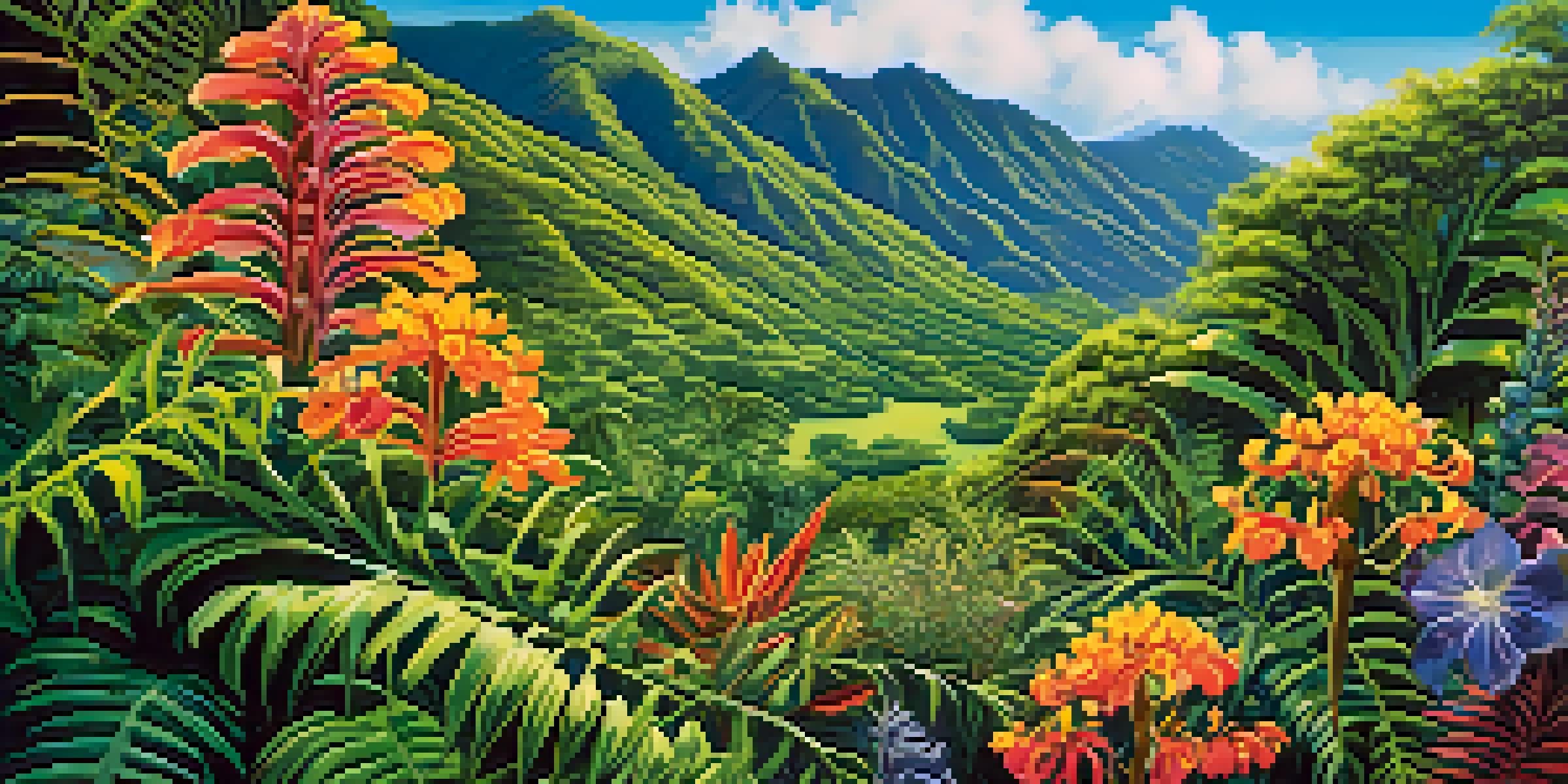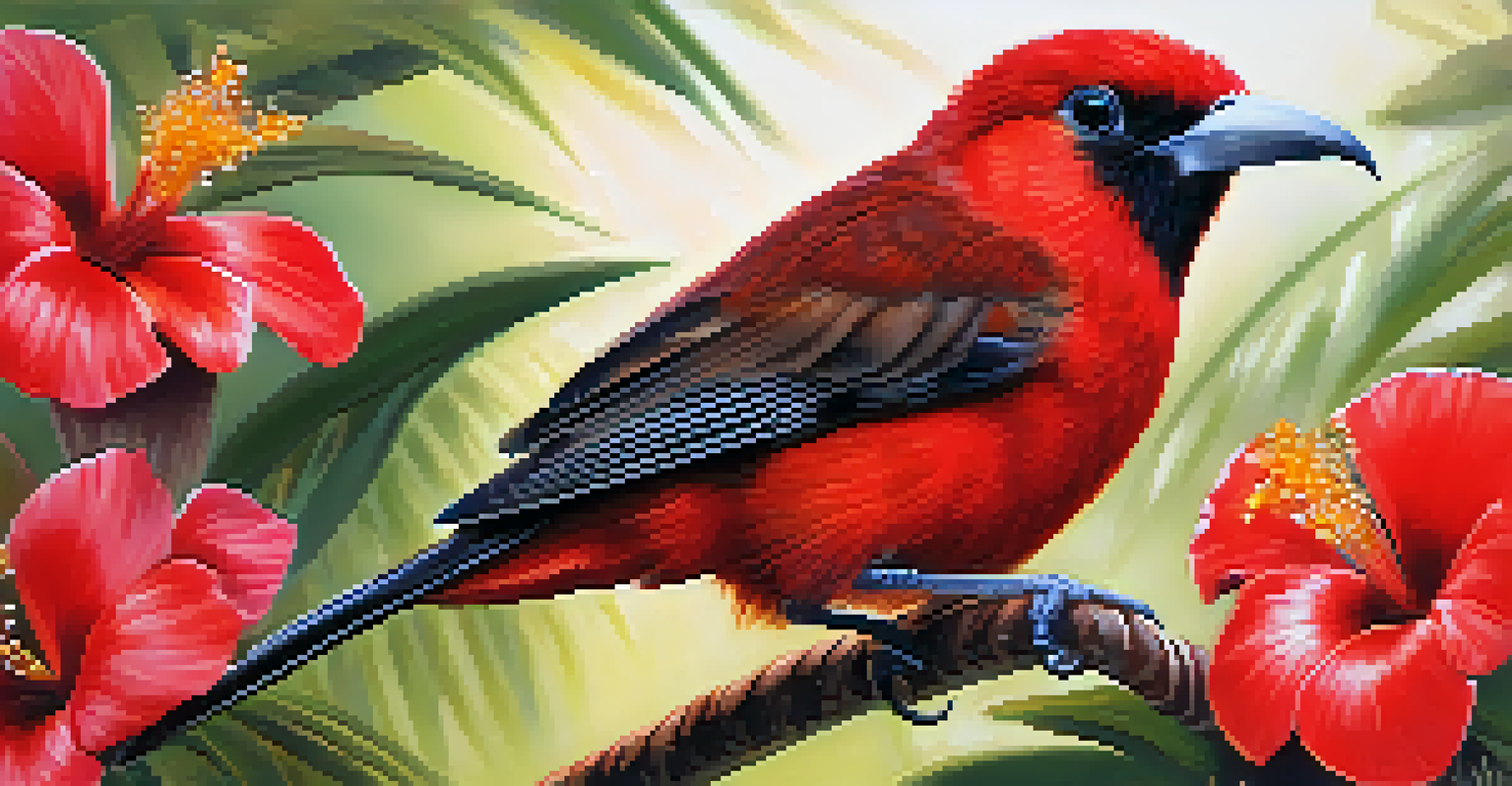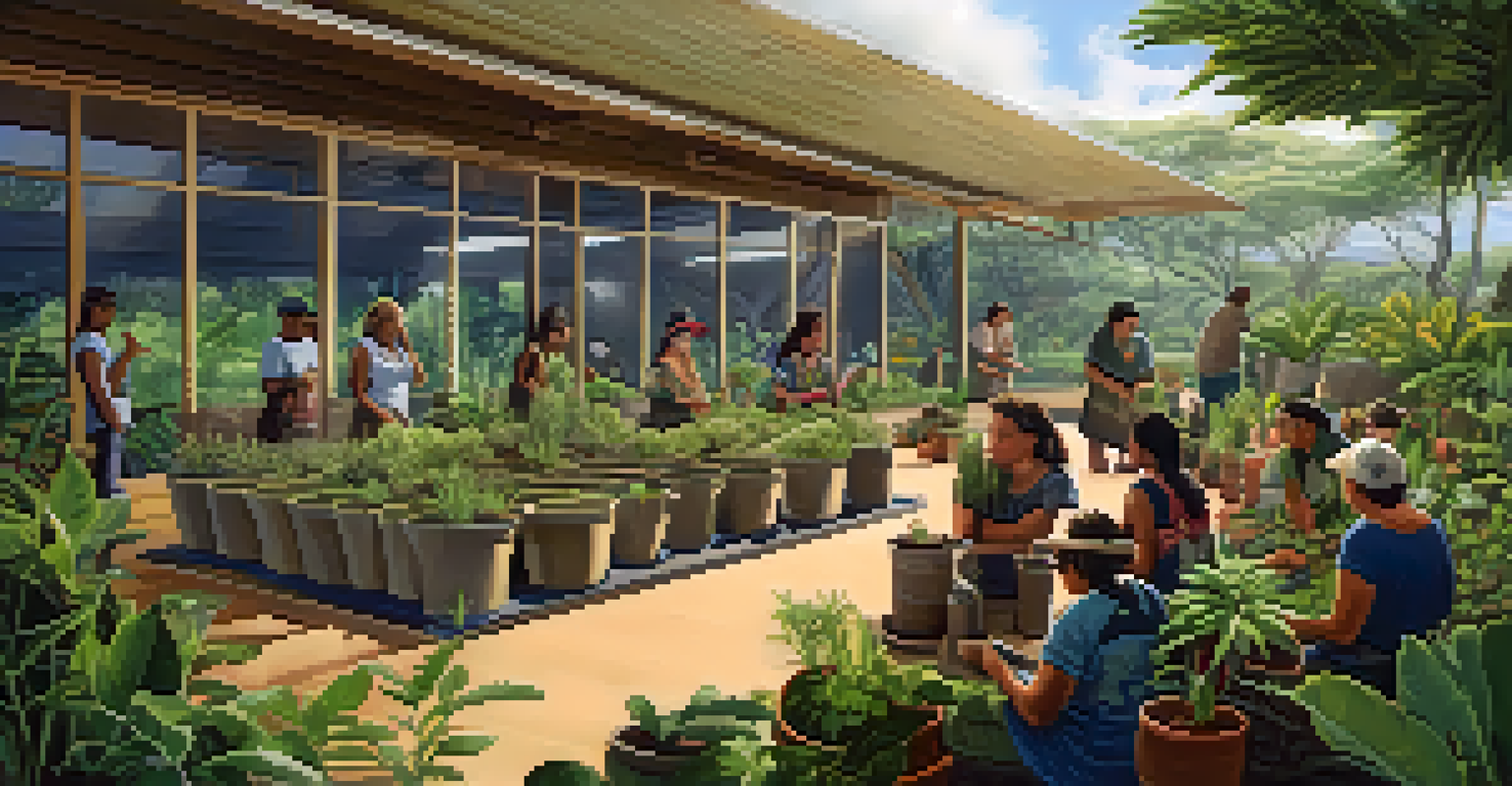The Importance of Native Hawaiian Plants in Ecosystem Health

Native Hawaiian Plants: A Unique Natural Treasure
Native Hawaiian plants are not just beautiful; they are a vital part of the islands' ecosystems. With over 1,000 species found nowhere else on Earth, these plants have evolved in isolation, developing unique adaptations to their environment. This uniqueness contributes to the rich biodiversity of Hawaii, making its ecosystems intricate and resilient.
The preservation of native plants is essential for the protection of our ecosystems and the cultural heritage of our communities.
Unlike many introduced species, native plants have established symbiotic relationships with local wildlife, including birds, insects, and other organisms. For example, the ‘i‘iwi bird has evolved to feed on the nectar of native flowers, helping with pollination in the process. This interdependence illustrates how native plants support not just their survival but the overall health of the ecosystem.
Preserving these native species is essential, as the loss of even one can have cascading effects. When native plants decline, so do the animals that rely on them, leading to a decline in biodiversity. This is why understanding and protecting native Hawaiian plants is crucial for maintaining the delicate balance of Hawaii's ecosystems.
The Role of Native Plants in Soil Health
Native Hawaiian plants play a significant role in maintaining soil health, which is foundational for a thriving ecosystem. Their deep roots help anchor the soil, preventing erosion and promoting water retention. This is especially important in Hawaii, where heavy rains can lead to significant soil loss if not properly managed.

Moreover, these plants contribute organic matter to the soil as their leaves and stems decompose. This organic matter enriches the soil, providing essential nutrients that support other plant life. Healthy soil is a key player in the larger ecosystem, as it nurtures everything from grasses to towering trees.
Native Plants Boost Ecosystem Health
Native Hawaiian plants are essential for maintaining biodiversity and supporting local wildlife, creating a balanced ecosystem.
When invasive species take over, they often do not provide the same benefits to the soil. These invaders can lead to soil degradation, making it harder for native plants to thrive. Therefore, protecting native plants is crucial for sustaining the soil health that supports diverse ecosystems.
Biodiversity and Native Hawaiian Flora
Biodiversity is the lifeblood of any ecosystem, and native Hawaiian plants are integral to this phenomenon. Each native species contributes to the complex web of life, providing food, shelter, and habitat for countless organisms. This rich tapestry of life ensures that ecosystems can withstand environmental changes and recover from disturbances.
In every walk with nature, one receives far more than he seeks.
For instance, native shrubs and trees provide habitats for various bird species, while their flowers attract pollinators. Such interactions are essential for the reproduction of many plants and the survival of local wildlife. Without this intricate network, ecosystems can become fragile and less resilient to threats like climate change.
Additionally, high levels of biodiversity can enhance ecosystem productivity and stability. In Hawaii, the more diverse the plant life, the more robust the ecosystems tend to be. This makes preserving native plants not just an act of conservation, but a necessity for ecological health.
Native Plants and Climate Resilience
One key aspect of native Hawaiian plants is their ability to adapt to local climate conditions, making them more resilient to environmental stressors. Over thousands of years, these plants have evolved traits that allow them to thrive in Hawaii's unique climate, which has both wet and dry regions. This adaptability is crucial as climate change continues to affect weather patterns globally.
Moreover, native plants can help mitigate the impacts of climate change. Their deep-root systems improve water infiltration and retention, reducing flooding and soil erosion during heavy rains. They also provide shade and cooling, helping to regulate local temperatures in the face of rising heat.
Cultural Importance of Native Flora
These plants play a crucial role in Hawaiian culture, being integral to traditional practices, spirituality, and identity.
By fostering native plant populations, we can enhance the resilience of Hawaii's ecosystems against climate change. This not only protects the flora and fauna but also supports the communities that depend on these ecosystems for their livelihoods and cultural practices.
Cultural Significance of Native Hawaiian Plants
Native Hawaiian plants hold immense cultural significance for the Hawaiian people. They are intertwined with traditional practices, spirituality, and identity, with many species being used in hula, medicine, and crafts. For instance, the kukui tree is not only valued for its nuts, which produce oil, but it also holds a special place in Hawaiian mythology and culture.
These plants are more than just resources; they are symbols of connection to the land and heritage. Understanding their role in Hawaiian culture fosters a deeper appreciation for the environment and encourages the preservation of these species. As people engage with their cultural roots, they often become advocates for conservation efforts.
Furthermore, community initiatives that promote the use of native plants in cultural practices can help revive traditional knowledge and strengthen community bonds. This cultural revitalization is essential for sustaining both the plants and the people who rely on them.
Threats to Native Hawaiian Plants
Despite their importance, native Hawaiian plants face numerous threats that jeopardize their survival. Invasive species, such as non-native plants and animals, often outcompete native flora for resources like sunlight and nutrients. This competition can lead to the decline or extinction of native species, disrupting the entire ecosystem.
Habitat loss due to urban development, agriculture, and climate change further exacerbates the situation. As natural habitats are altered or destroyed, native plants struggle to survive. Conserving these ecosystems is vital not just for the plants, but for all the species that depend on them.
Threats to Native Species Persist
Invasive species, habitat loss, and climate change pose significant risks to the survival of native Hawaiian plants.
Additionally, climate change poses a significant threat, altering rainfall patterns and increasing temperatures, which can be detrimental to many native species. If we do not take action to protect these plants, we risk losing a critical component of Hawaii's natural heritage and the ecological balance of the islands.
Conservation Efforts for Native Hawaiian Plants
In light of the threats facing native Hawaiian plants, various conservation efforts are underway to protect and restore these vital species. Government agencies, non-profits, and local communities are collaborating to create programs focused on habitat restoration and the removal of invasive species. Such initiatives are essential for providing a safe space for native plants to thrive.
Educational programs also play a crucial role in conservation. By raising awareness about the importance of native plants, communities are empowered to engage in preservation efforts. In schools and community centers, workshops teach individuals how to grow and care for native plants, fostering a culture of stewardship.

Furthermore, partnerships with organizations focused on ecological restoration help ensure that conservation efforts are sustainable. By working together, we can create a future where native Hawaiian plants not only survive but flourish, enriching the ecosystems and the cultural fabric of Hawaii.